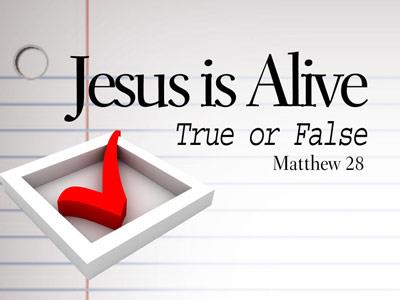-
Disputed Question
Contributed by James Hickman on Jan 9, 2016 (message contributor)
Summary: A simple answer to the question "Who is Jesus?" The intent is to get people to thinking and talking about Jesus.
DISPUTED QUESTION
On our recent vacation, we saw our daughter-in-law Kelly’s former employee and her children. Kelly had worked as their nanny when they lived in Dublin but that job ended when they moved to Dublin. Just to make that a little clearer, Kelly had worked as the nanny for the children of a couple of physicians from Ireland who were practicing for a while in the States. The family lived in Dublin (Ohio). Then they moved back to Ireland where they settled in Dublin.
Anyway, when Cora, one of the physicians, found out we were all going to the UK she invited us to visit them in Dublin for a day. It’s fairly inexpensive to travel from London to Dublin. So, David, Kelly, Pat, and I spent the Wednesday of our vacation in Dublin—Ireland.
We packed a lot into the hours we had after having breakfast with Kelly’s friends. For me, one of the most exciting moments was a visit to the Chester Beatty Library. Chester Beatty was an American mining engineer who became collector of ancient manuscripts. The story of how his collection ended up in Ireland is too long to tell here but just keep in mind that it is one of the greatest collections of ancient manuscripts in the world. On the tour of the library, we saw a fragment of Luke’s gospel that dated from late in the second century.
Those were the years when persecution began to intensify.
It was exciting to think that some band of Christians gathered to hear that gospel read, gathered knowing that their lives might be in danger because of their faith. But they risked their lives because they wanted to know more about this Jesus.
Who is this Jesus?
All around the world men and women are meeting together to worship this same Jewish carpenter-teacher. In many places, even today, those men and women face persecution and hardship because of their devotion to Him.
Who is this Jesus?
This morning I’d like to answer that question in some very basic terms. There’s a lot more that might be said than I will say but what I plan to say is a starting place for further study and exploration in an effort to answer the question: Who is this Jesus?
Jesus was a man who lived at a particular time, in a particular place, a man whose life reflected a particular culture.
I’m starting here because for the past couple hundred years there have been some rather loud critics who have argued that Jesus is a myth or at least the Jesus as he has always been presented by the church is a myth.
The truth is, there is as much if not more evidence that Jesus lived than there is evidence that Julius Caesar lived.
The New Testament, which records the life and words of Jesus, is a document that was so carefully preserved that no other document from ancient history has so many copies, dating so close to the time of the original writings.
For example, many of the documents on which we base our knowledge of ancient Greek and Roman history exist only in copies made several hundred years after the original were written. And, even then, only a handful exist.
There are some 5,000 partial or complete copies of the gospels, most of which were made no more than 300 to 400 years after the originals. One portion of John’s Gospel exists which dates about fifty years after John wrote it. It’s in the John Ryland’s Library at the University of Manchester.
That a man named Jesus of Nazareth lived in Galilee during the first century, that he was an itinerant teacher, that he was credited with performing remarkable acts and saying remarkable things, that he was crucified by the Romans, that his followers believed he rose from the dead, are some of the most reliable facts of history.
The so-called quest for the “historical” Jesus, which is portrayed in so many of the television documentaries you see at Easter and Christmas, makes the mistake of assuming the New Testament account is unreliable.
If, instead, they began by accepting the reliability of the New Testament, only rejecting its account when the facts of history forced them to, they would discover a remarkable picture of Jesus that would capture their imaginations.
They would see a man who lived as a Jew among Jews. They would see a Jewish man who understood that God was—during his lifetime—fulfilling his most ancient promise to humanity.
And, the longer we looked at Jesus, the longer we examined him in that light, the more we would realize he was a man who transcends place, time, and culture.
As we search for an answer to the question Who Is This Jesus? We would see that Jesus was a man who lived as a no other man lived.

 Sermon Central
Sermon Central



